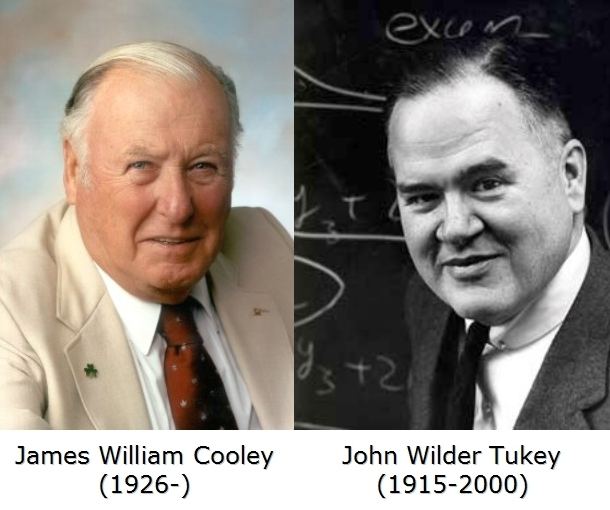Name James Cooley | Role Mathematician | |
 | ||
Similar People John Tukey, Solomon Lefschetz, Ginni Rometty | ||
History of FFT with Cooley and Tukey
James William Cooley (born 1926, died June 29, 2016) was an American mathematician. Cooley received a B.A. degree in 1949 from Manhattan College, Bronx, NY, an M.A. degree in 1951 from Columbia University, New York, NY, and a Ph.D. degree in 1961 in applied mathematics from Columbia University. He was a programmer on John von Neumann's computer at the Institute for Advanced Study, Princeton, NJ, from 1953 to 1956. He worked on quantum mechanical computations at the Courant Institute, New York University, from 1956 to 1962, when he joined the Research Staff at the IBM Watson Research Center, Yorktown Heights, NY. Upon retirement from IBM in 1991, he joined the Department of Electrical Engineering, University of Rhode Island, Kingston, where he served on the faculty of the computer engineering program.
Contents

His most significant contribution to the world of mathematics and digital signal processing is the Fast Fourier transform, which he co-developed with John Tukey (see Cooley–Tukey FFT algorithm) while working for the research division of IBM in 1965.
The motivation for it was provided by Dr. Richard L. Garwin at IBM Watson Research who was concerned about verifying a Nuclear arms treaty with the Soviet Union for the SALT talks. Garwin thought that if he had a very much faster Fourier Transform he could plant sensors in the ground in countries surrounding the Soviet Union. He suggested the idea of how Fourier transforms could be programmed to be much faster to both Cooley and Tukey. They did the work, the sensors were planted, and he was able to locate nuclear explosions to within 15 kilometers of where they were occurring.
J.W. Cooley was a member of the Digital Signal Processing Committee of the IEEE, was elected a Fellow of IEEE for his work on FFT, and received the IEEE Centennial Medal. In 2002 he received the IEEE Jack S. Kilby Signal Processing Medal. He considerably contributed to the establishing of terminology in digital signal processing.
